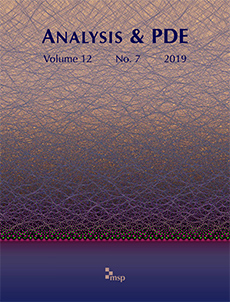Abstract
Given a coercive Hamiltonian which is quasiconvex with respect to the gradient variable and periodic with respect to time and space, at least “far away from the origin”, we consider the solution of the Cauchy problem of the corresponding Hamilton–Jacobi equation posed on the real line. Compact perturbations of coercive periodic quasiconvex Hamiltonians enter into this framework, for example. We prove that the rescaled solution converges towards the solution of the expected effective Hamilton–Jacobi equation, but whose “flux” at the origin is “limited” in a sense made precise by Imbert and Monneau. In other words, the homogenization of such a Hamilton–Jacobi equation yields to supplement the expected homogenized Hamilton–Jacobi equation with a junction condition at the single discontinuous point of the effective Hamiltonian. We also illustrate possible applications of such a result by deriving, for a traffic flow problem, the effective flux limiter generated by the presence of a finite number of traffic lights on an ideal road. We also provide meaningful qualitative properties of the effective limiter.
Citation
Giulio Galise. Cyril Imbert. Régis Monneau. "A junction condition by specified homogenization and application to traffic lights." Anal. PDE 8 (8) 1891 - 1929, 2015. https://doi.org/10.2140/apde.2015.8.1891
Information





